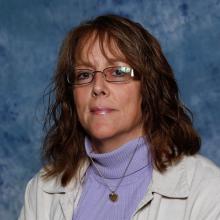Stick the Landing: Faculty Gymnastics Guidance for Blended and Flipped Learning
Concurrent Session 6





Brief Abstract
Much like gymnastics, instructors in a Blended/Flipped classroom can feel like they are competing in the floor exercise, high bar, and balance beam. Faculty must ensure classrooms are achieving rigor and integrating student care through learner-centered instruction. Join this workshop to score a perfect 10 on each classroom event.
Presenters



Extended Abstract
Blended Learning, a mix of online and traditional learning, moved to the forefront of instructional models as institutions struggled to provide meaningful educational experiences to students during the recent pandemic. Flipped learning is an instructional strategy where students take ownership of their learning, reviewing materials and preparing for class prior to class time. In many institutions, the flipped learning instructional strategy was used in a blended learning instructional model, in an effort to make the best use of synchronous face-to-face class meetings.
In this workshop, the presenters will share lessons learned, when classes are both blended and flipped. Participants will utilize technology tools such as Padlet, to identify acrobatic accommodations through floor routines, build student skill development through high bar exercises, as well incorporate the balance beam to ensure student success.
Higher Education has had to face many different outside obstacles when working with students. Along with life circumstances, students have had situations that resulted in personal challenges to contend with during their everyday studies. Academic rigor can be a challenge when instructors are trying to accommodate students while extending grace for outside factors that may be beyond students’ control. Instructors are continuously craving creative ways to provide students an opportunity to excel in their studies. These creative ways can be somewhat of a balancing act between following university policy and allowing grace in a time of need. Using acrobatic-like accommodations in the classroom is sometimes necessary to ensure that students are successfully completing assignments and mastering the topics.
Many factors come into play when providing extensions or ability to accept late work. These factors include the instructional model, student population, and university policy. With many universities moving toward a combination of the Flipped Classroom and Blended Learning model, instructors are needing to sift through an ever-growing list of strategies on how to provide students’ academic rigor and empathy at the same time. The Flipped Classroom allows students to do a bulk of the work on their own putting more responsibility on the student. Although this may seem like more work for the student, the blended and flipped learning combination positively influences the students’ educational experience (Fisher, 2018). This responsibility along with any outside challenges that the student might face can cause added stress to the academic experience.
One of the most important strategies is the ability to effectively communicate with students. Strict deadlines and boundaries need to be set to provide students with the guidance needed to master the class. Communication regarding a student’s individual situation becomes key to determining the proper time frame for submission of work.
A challenge, in all classes, but especially in blended and flipped classes is maintaining academic rigor while holistically caring for each student. The goal, in these classes, is for faculty to connect these two objectives. Blended learning requires students to self-regulate (Halasa, et al., 2020). Self-regulated learning views learning as a process where students take responsibility for their own learning and their role in their academic success. It consists of planning, monitoring, and reflecting (Ackerman, 2020). Participants will work in groups, to discuss best-practices for helping students help themselves, in all three aspects of self-regulated learning, and will share their ideas on Padlet, a web app that allows participants to post on a digital wall.
While helping students master self-regulated learning, there are many opportunities for faculty to incorporate activities that will naturally increase student resilience, another skill that is imperative for today’s students. Resiliency is the ability to adapt well when facing significant sources of stress (“Building Your Resilience”, 2012). In the planning phase, students are encouraged to be proactive. That sense of control empowers students. In the monitoring stage, students feel a sense of accomplishment as tasks are completed. In the reflecting stage, students gain insight into how they learn, resulting in increased performance. A resilient student, who has mastered self-regulation, can dive deeper into the material and engage in the learner-centered classroom.
The benefits of creating a learner-centered classroom were evident pre-pandemic, and also while both students and faculty balanced a new normal, in and out of the classroom. The learner-centered classroom encourages active engagement, motivation, connection opportunities, and integrates technology to help students develop real-life skills (Green et al., 2017; Yilmaz, 2017). With the transition to blended and flipped classrooms, students shifted to having a more active role in the learning process through the completion of pre-class preparation activities (Andujar & Nadif, 2020). Although this learning approach provides flexibility, it also adds another level of student accountability in which the instructor provides guidance during the class session based on the completion of homework assignments. The additional requirements can create challenges for students balancing this unique learning experience.
To support students, instructors can use the balance beam approach to establish relationships, maintain rigor and excellence, while demonstrating relevance of the preparation activities to current topics or practices. This approach is demonstrated when showing “real concern for the growth of their students and have built relational capital through honesty, compassionate correction, and encouragement, students become comfortable and confident in their ability to accomplish more complex projects as well as expand their cognitive abilities” (Henry, 2014, p. 281). Instructors can also use the empower framework, which focuses on empathy, motivation, purpose, ownership, willingness, engagement, and relating (Blake, 2020).
In this session, participants will review strategies and technology tools to encourage optional activities while also building classroom connections. Participants will also create an acronym reflecting essential elements of the learner centered classroom and will have the opportunity to share strategies as well as teaching techniques using Padlet.
References
Andujar, A., & Nadif, F. Z. (2020). Evaluating an inclusive blended learning environment in EFL: A flipped approach. Computer Assisted Language Learning. https://doi-org.lopes.idm.oclc.org/10.1080/09588221.2020.1774613
Ackerman, C. (2020). What is self-regulation? (+95 skills and strategies). https://positivepsychology.com/self-regulation/
Blake, M. N. (2021). Holistic evaluation strategies to empower remote adjunct faculty. In Dailey-Hebert, A., Mandernach, B. J., & Donnelli-Sallee, E. (Eds.), Handbook of Research on Inclusive Development for Remote Adjunct Faculty in Higher Education (pp. 282-290). IGI Global. http://doi:10.4018/978-1-7998-6758-6.ch020
Building your resilience. (2012). American Psychological Association. https://www.apa.org/topics/resilience
Fisher, R., Perenyi, A., Birdthistle, N. (2018) The positive relationship between flipped and blended learning and student engagement, performance and satisfaction. https://journals.sagepub.com/doi/full/10.1177/1469787418801702?casa_token=jvuhCQxJh_kAAAAA%3AA8tseo7A3AievCf8rc8OiHgXtkx84xhJ_-1Mx-9lea8vS3DZF8juEDFDR9mfptpQ_HP49CCB776HWrE
Green, T. T., Hoffmann, M. M., Donovan, L. L., & Phuntsog, N. N. (2017). Cultural communication characteristics and student connectedness in an online environment: Perceptions and preferences of online graduate students. International Journal of E-Learning & Distance Education, 32(2), 1-27.
Halasa, S., Abusalim, N., Rayyan, M. Constantino, R.E., Nassar, O. Amre, H., Sharab, M., & Qadri, I. (2020). Comparing student achievement in traditional learning with a combination of blended and flipped learning. Nursing Open, 7(4), 1129–1138. https://doi-org.lopes.idm.oclc.org/10.1002/nop2.492
Henry, J. L. (2014). Developing a learning classroom: Moving beyond management through relationships, relevance, and rigor. Teaching Theology & Religion, 17(3), 280–281. https://doi.org/10.1111/teth.12219
Yilmaz, O. (2017). Learner centered classroom in science instruction: Providing feedback with technology integration. International Journal of Research in Education and Science, 3(2), 604-613.

